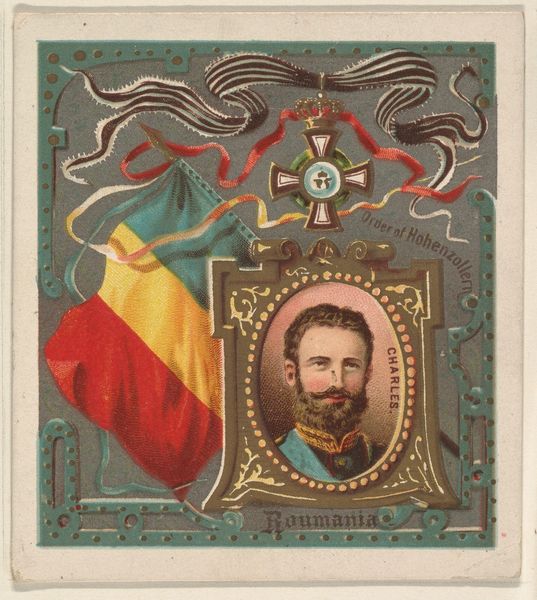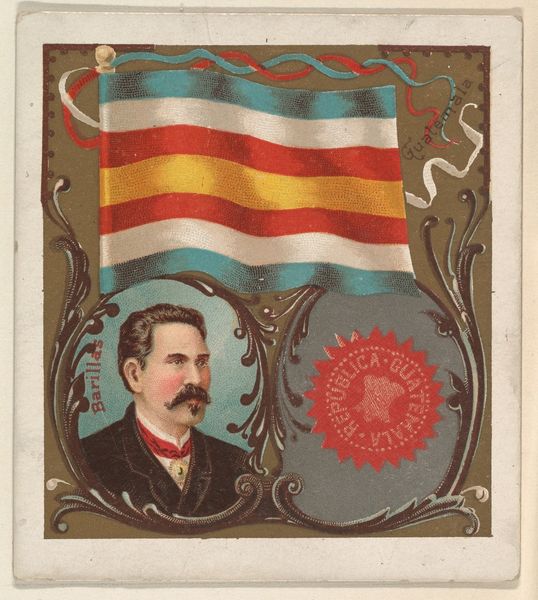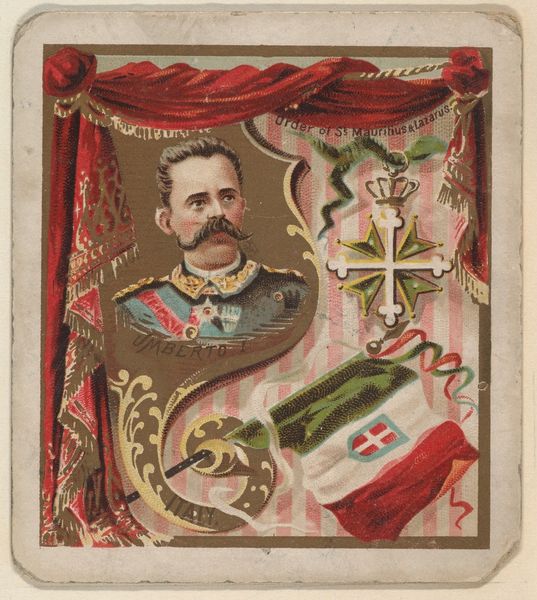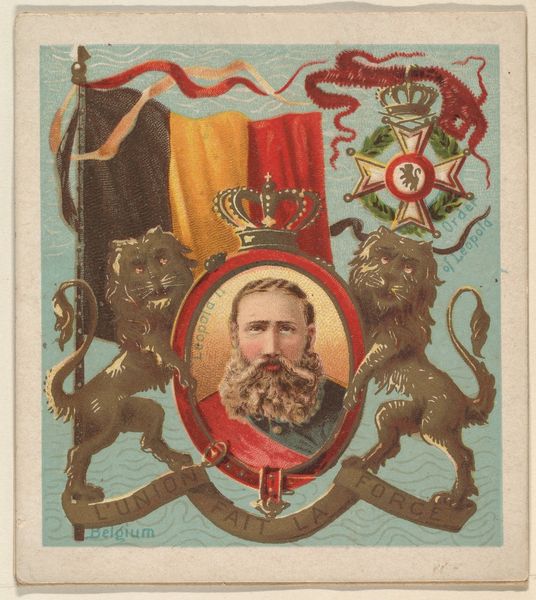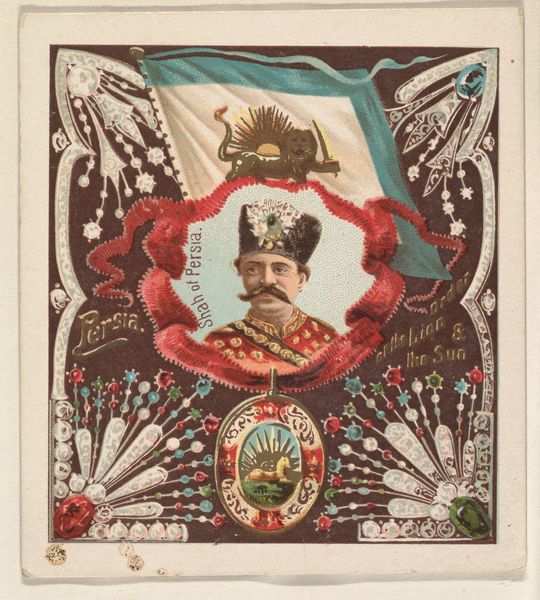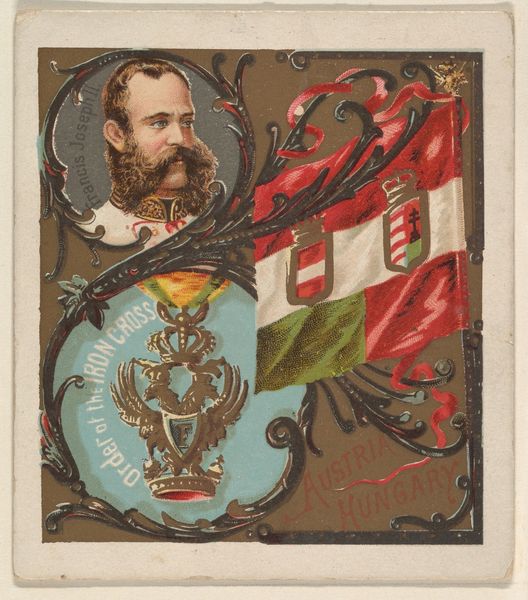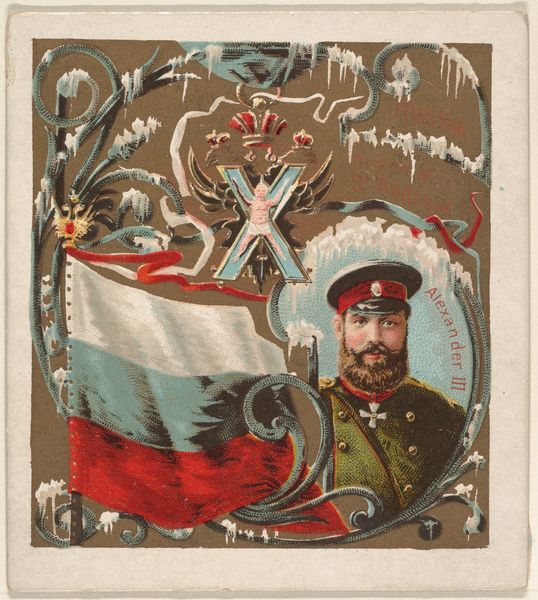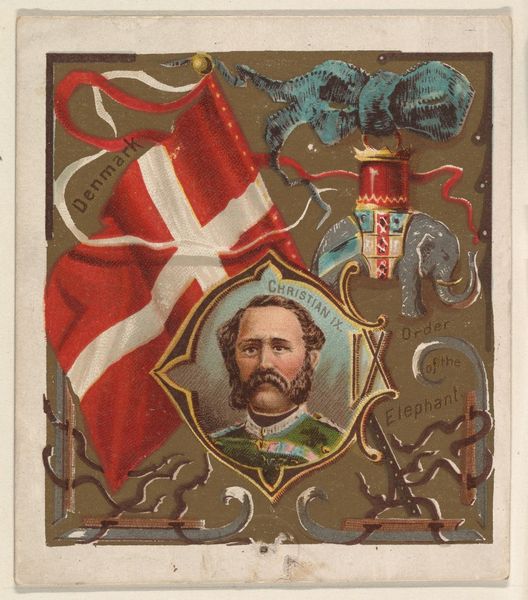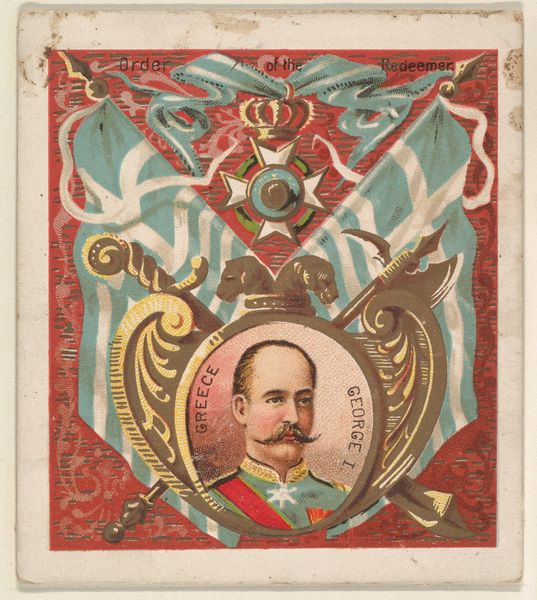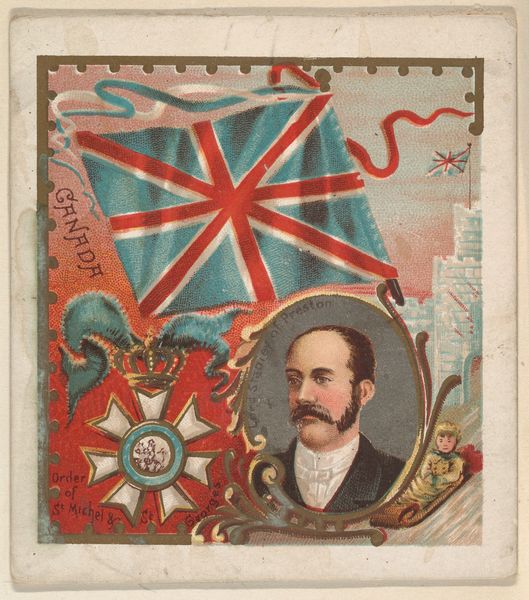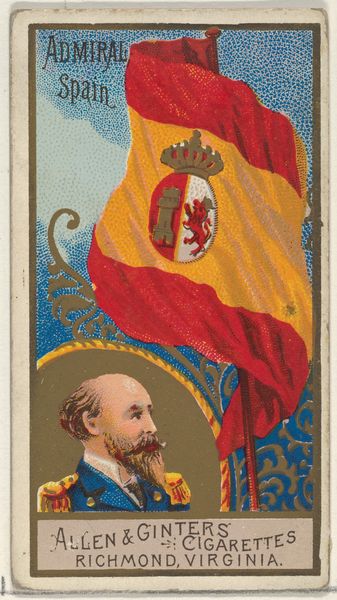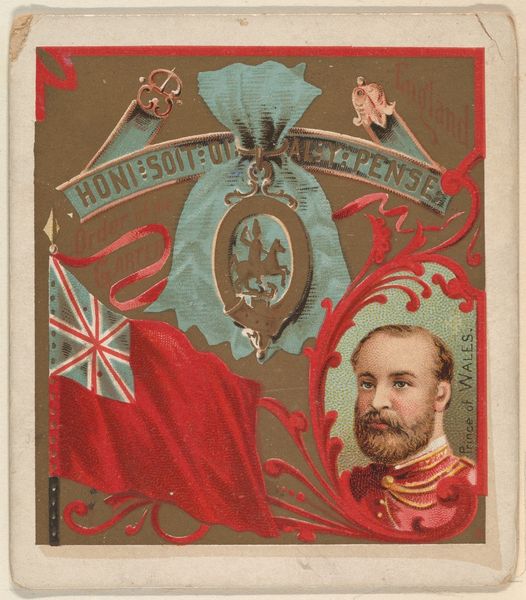
Ecuador, from the International Cards series (N238), issued by Kinney Bros. 1888
0:00
0:00
drawing, print
#
portrait
#
drawing
# print
#
caricature
#
caricature
#
figuration
#
history-painting
#
modernism
Dimensions: Sheet: 3 1/4 × 2 7/8 in. (8.2 × 7.3 cm)
Copyright: Public Domain
Editor: Here we have "Ecuador, from the International Cards series (N238)" made in 1888 by Kinney Bros. It’s a small print featuring a man, presumably Ecuadorian, alongside national symbols. What immediately strikes me is how this image was used on a tobacco card - I'm curious about the motivation behind it! What do you make of it? Curator: That's a great starting point. Consider the era: 1888 was a time of intense global expansion and burgeoning nationalism. These cards, distributed with tobacco products, weren't just random images. They served a purpose, they normalized a certain understanding of the world for consumers. Editor: So, in what way? What "understanding" are we talking about? Curator: Think about it: a commercial enterprise like Kinney Bros. is producing images of foreign leaders and national symbols. This helped create a sense of familiarity with, and perhaps even authority over, other nations and cultures for their consumers. It was part of building a specific idea about America's place in the world. Note how it is constructed as both a portrait but also a collectible object. What's subtly at play with that duality? Editor: It makes me wonder about cultural sensitivity, especially since it reduces a nation to an image on a collectible card. It feels like a symbolic annexation of Ecuador. The symbolism… it all appears carefully chosen for maximum, I guess, promotional impact? Curator: Precisely. Consider, also, the economic ties between the US and Ecuador at the time, possibly linked to resources like oil. How might those factors have influenced this particular image's production and circulation? This isn’t just art; it's a commodity, and understanding its market is critical. Editor: This card is so much more loaded than I initially realized. It really brings to light how simple everyday objects can contribute to larger socio-political narratives and construct power dynamics. Curator: Exactly! And remember to ask who benefitted from that narrative. Now you see the bigger picture, editor.
Comments
No comments
Be the first to comment and join the conversation on the ultimate creative platform.
